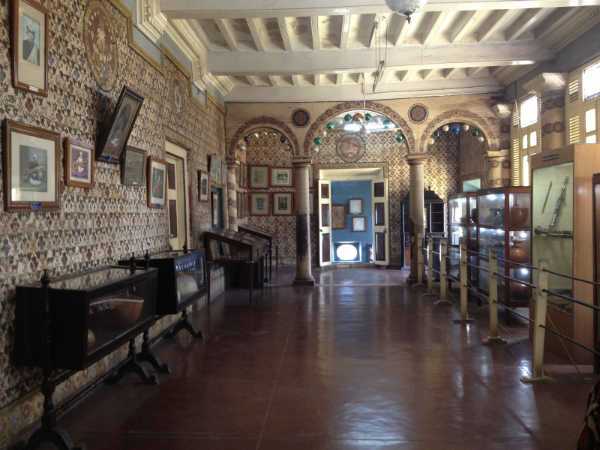Jaganmohan Palace
₹ 133 onwards
View Mysore PackagesWeather :
Label : Top Attraction
Tags : Forts & Palaces
Timings : 10:00 AM - 5:30 PM, Daily
Time Required : 1-2 hrs
Entry Fee : Adults: INR 20,
Kids: INR 10
Constructed in : 1869
Constructed by : King Krishnaraja Wodeyar III
Jaganmohan Palace, Mysore Overview
Situated in the royal city of Mysore, the Jaganmohan Palace is a spectacular edifice that has an illustrious history attached to its name. It was used by the Wodeyars of Mysore when their main residence Amba Vilas Palace was under renovations post a fire incident. It is one of the seven palaces that are situated in the city and is counted as one of the most beautiful contributions of the Wodeyar Kings of the city during their reign. The Jaganmohan Palace was converted into a magnificent art gallery and today hosts some of the most exquisite pieces of artwork for the public to see.
Jaganmohan Palace held an important position in the administrative and legislative affairs of Mysore for a long period. From hosting the early convocations of the Mysore University to holding the first session of the Legislative Council of Mysore, this facade has seen it all. Finally, in 1915, the palace was deemed fit to be an art gallery and is a safe house for as many as 2000 paintings which pertain to various art forms such as Mysore, Mughal and Shantiniketan.
Mimicking the beautiful art that is housed within, the architecture of Jaganmohan Palace is intricate and detailed beautifully. The main door is a beautiful example of the typical Hindu style of architecture and two wooden displays illustrating the ten incarnations of Lord Vishnu embellish the premises as well. Visit this destination to experience the history of Mysore through colours and pictures that will leave a long-lasting impression on your mind.
Read More on Jaganmohan Palace
Architecture of Jaganmohan Palace

The interior is ornamented with murals and paintings which pertain to the Mysore style of artwork and depict scenes from Dasara and Jumbo Savari. Incidentally, it is one of the first known paintings of Mysore Dasara that had been painted using vegetable dyes. A family tree of the Wodeyars is also present within the Jaganmohan Palace, which delves deep into the history of this amazing destination.
History of Jaganmohan Palace
In the year 1902, King Rajarshhi Nalvadi Krishnaraja Wodeyar was installed to the royal throne and this grand occasion was held in the premises of the Jaganmohan Palace. The palace was also used as the special Dusara Durbar by the king during the festive season, and was finally reinvented as an art gallery in the year 1915.
Jayachamarajendra Art Gallery
An important artwork here is the painting called 'Lady with the Lamp', which was painted by the artist Haldenkar and is the only exhibit in the room where it is displayed. Other than that, as many as 2000 paintings of Mysore, Mughal and Shantiniketan style are on display here as well. Works of eminent artists like Raja Ravi Verma of Tiruvanathouram, Nikolai Roerich, Svetoslav Roerich and Rabindranath Tagore and Abanindranath Tagore find a place in Jaganmohan Palace too.
How To Reach Jaganmohan Palace
Top Hotel Collections
Top Hotels Near Jaganmohan Palace
Jaganmohan Palace Reviews

Have a Question on Jaganmohan Palace?

experience.